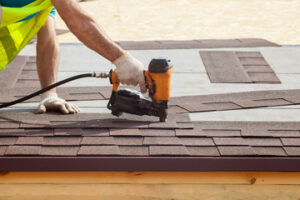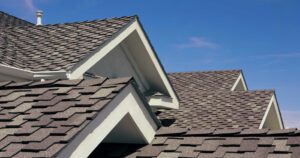Roofing maintenance should include regular inspections of the flashing, chimneys, vents, skylights, and pipes. These elements should be inspected for leaks and structural problems such as sagging pipes or deflected supports.
Also, the trees around your home should be trimmed as they can easily snap in high winds during storms and cause severe damage to the roof. Visit https://www.portcharlotteroofers.com/ to learn more.
Debris removal is the process of removing materials that have been destroyed or damaged during a disaster. It’s an important part of the clean-up effort following a natural disaster, and it’s also sometimes performed as part of routine maintenance to keep areas clean and free of debris. Debris removal can be done manually, using tools such as shovels and rakes, or it can be done by large machinery, including bulldozers and excavators. The cost of debris removal can vary widely depending on the method used and how much material needs to be removed.
Typically, the cost of debris removal is covered by insurance. However, the amount of coverage may be limited by the deductible and/or other terms in the policy. If you’re interested in obtaining this type of coverage, contact your insurance agent to discuss the specifics of your policy.
The cost of debris removal can include costs for local material and equipment delivery, service provider transportation to and from the worksite, labor planning and setup, cleanup, and as applicable, time needed to achieve minimum job hours agreed to before the work begins. In addition, there are usually additional labor upcharges associated with master/premium craftsmanship, expedited scheduling and difficult or complex site conditions.
Other costs that may be included in the roof debris removal include the cost of testing and remediation (as necessary) of hazardous materials, such as asbestos and lead. Also, some local governments and private companies may offer coordinated debris removal programs to help homeowners get their lots cleared quickly and at a reasonable cost. If you decide to participate in a coordinated program, be sure to photograph any recognizable items that may need to be cleaned and/or salvaged before they’re removed.
Inspect the Flashing
The flashing is the unsung hero of your roof. It’s the protective barrier that seals vulnerable joints and penetrations. Flashing is a thin strip of metal that’s usually made of aluminum. It’s found around various roof features including chimneys, vents and skylights. It’s also used to make the junction where the roof meets walls or dormers. The flashing is designed to direct water away from these areas, ensuring that rain and snow don’t leak into the home.
During a roof inspection, the home inspector will look at the flashing and its surrounding shingles. They’ll check for deterioration and any signs of water damage like staining, rust and moss. They’ll also inspect the attic to see if there are any leaks or dampness. In the event of a leak, they’ll use a flashlight to locate the source and find out what caused it.
If a leak is detected, the home inspector will repair it using a ladder or a safe access point. They’ll start by removing the shingle in the affected area to access the flashing beneath. Then they’ll take out the old flashing and replace it with new materials. They’ll then shingle the area and apply a sealant.
Leaks around the skylight can be more complicated to fix than those on other parts of the roof. This is because the flashing and shingles around the skylight need to be removed to access the problem. This is done with extreme care to avoid damaging unaffected shingles.
Home inspectors will also look at the flashing around chimneys, vents and skylights to ensure that it’s properly installed. They’ll also check the gutters to see if they’re free from rust or holes. Finally, they’ll look at the ventilation of the attic and roof to see that it’s in good condition. Any ventilation problems could lead to rot or dampness. This will affect the integrity of the roofing materials and void any warranties. It’s important to have these issues fixed before they cause major structural problems. Having these repairs done by professionals is the best way to prevent expensive roofing damage.
Inspect the Soffit and Fascia
While they might not seem like significant parts of your roof, the fascia and soffit do more than just enhance your home’s curb appeal. They play a vital role in protecting your roof from moisture, pests and other issues that can lead to significant damage to your roof.
The soffit installs underneath your roof’s overhang and acts as a skin to protect the rafters and eaves of your roof. It also provides proper ventilation for your attic space, ensuring air circulates properly to reduce moisture buildup and eliminate issues such as mold and wood rot. It is often perforated to encourage air circulation, and it is a key component in your attic’s ventilation system.
Fascia is a long piece of trim that spans the edge of your roof overhang and helps the overall look of your roof appear finished. It is commonly painted or stained and can also be covered with a maintenance-free product like aluminum to protect it from rot, insects and other damage. Depending on the material used, it can be quite durable and may not require maintenance at all.
A good inspector will check the fascia for rotting, cracking, warping and other damage. They will also examine the thin metal flashing that lines penetrations, such as skylights and chimneys, to ensure they are intact. If these are damaged, your roof will be exposed to leaks, which could damage the insulation and shingles above.
Soffit and fascia repair is relatively inexpensive, but it’s still important to have them inspected regularly to prevent more costly problems. If you’re having a problem with these, have it fixed as soon as possible to prevent further damage and protect your roof and the rest of your home. A soffit and fascia inspection will typically cost $20-$30 per linear foot, but this will vary depending on the size of your roof and the material you choose. In addition, you will need to consider the cost of removing and installing new fascia and soffit boards if they’re damaged. Fortunately, these are easy repairs and can be done by a professional roofer.
Trim Trees
Trees provide structure within your landscaping, reduce energy costs by shading the roof, and prevent water damage by directing rainwater away from the home. However, they can also create problems when their limbs touch or rub against the roof, leading to erosion of the shingles and moisture retention that can cause leaks. Regular trimming of tree limbs will help maintain a safe distance between the trees and your roof.
Professionals who specialize in pruning are called arborists. They can trim a wide range of trees, from shrubs to large shade trees and even fruit trees. Arborists perform two types of pruning: cleaning and raising and thinning. Cleaning is the removal of branches that are dead, diseased, or weakly attached. The goal is to improve air circulation, maintain form and shape, and to keep the canopy healthy. Raising involves removing lower branches that can interfere with pedestrians, vehicles, and vistas. The goal is to allow more space under the tree, as well as to keep the roots from getting too close to underground utility lines.
Another reason to regularly trim tree limbs is to reduce the risk of them breaking off during a storm and damaging your property. This is particularly important if a tree is located near your house, or if it has a lot of limbs hanging over your roof.
While many people attempt to do their own tree trimming, it is best left to the professionals. Branches that hang too low and rub against the roof during a windstorm can wear away at the surface of the shingles and undermine the integrity of the roof. In addition, if a branch is cut improperly, it can damage the tree and possibly cause it to fall over. It is also advisable to hire an arborist that has experience working with the particular type of tree you have on your property. They can provide advice on the best times to prune, which can vary by species. For instance, some trees are best trimmed during their dormant season, while others may need to be trimmed when they are actively growing.





